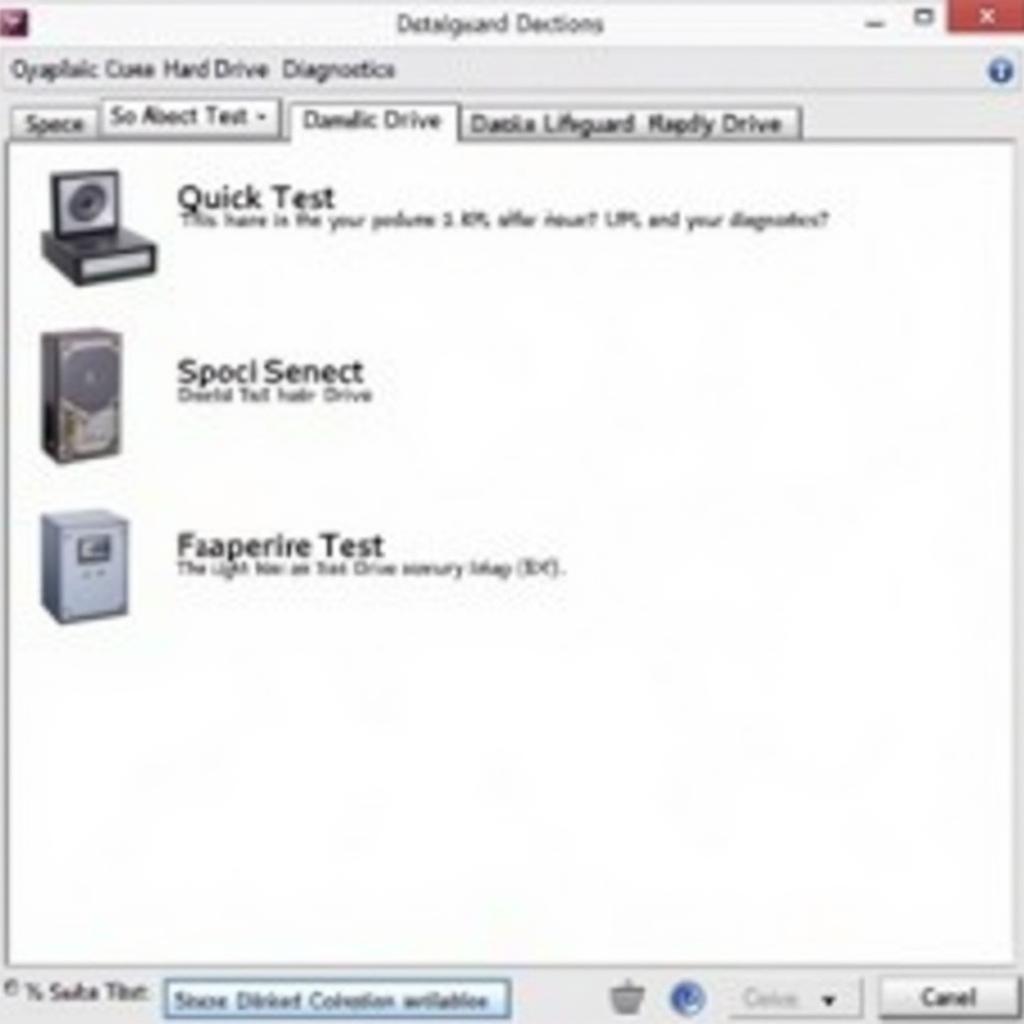Let’s face it, not everyone is glued to their smartphones, and that’s perfectly okay. But what happens when your car throws a technological curveball, and you need a diagnostic tool? Don’t worry, you don’t need to be a tech whiz to get to the bottom of those pesky engine lights. This guide explores user-friendly diagnostic tools specifically designed for cell phone-free car enthusiasts and professionals who prefer a more hands-on approach.
Taming the Tech Beast: Diagnostic Tools That Don’t Require an App
For many, the thought of wrestling with Bluetooth pairing and navigating complex app interfaces is enough to bring on a headache. Luckily, plenty of powerful diagnostic tools operate independently, providing clear, concise information without needing a smartphone.
Standalone Scanners: Your Pocket-Sized Mechanics
[image-1|standalone-scanner|Mechanic using a standalone scanner to diagnose a car engine|A mechanic is shown plugging a compact standalone scanner into a car’s OBD-II port, located beneath the dashboard on the driver’s side. The scanner’s screen displays a code reading, signifying a potential engine issue.]
Standalone scanners, as the name suggests, are self-contained units. They plug directly into your car’s OBD-II port (usually found under the driver’s side dash) and display diagnostic trouble codes (DTCs) along with their definitions on a built-in screen. Many models offer additional features like:
- Live Data Stream: View real-time sensor readings to get a better understanding of your engine’s performance.
- Freeze Frame Data: Capture a snapshot of the engine’s parameters at the moment a fault code was triggered.
- Smog Check Readiness: Determine if your vehicle is ready to pass an emissions test.
These scanners are perfect for those who value simplicity and want quick answers without the hassle of connecting to external devices.
PC-Based Diagnostic Tools: In-Depth Analysis at Your Fingertips
[image-2|pc-based-diagnostic-tool|A mechanic connecting a car to a laptop for diagnostics|The image shows a mechanic connecting a car to a laptop using a cable. The laptop displays a software interface with various graphs and data readings, indicating the car’s diagnostic information.]
For the more technically inclined or those who prefer a larger display, PC-based diagnostic tools offer a comprehensive solution. These tools typically involve connecting a device to your car’s OBD-II port and then to your computer via USB. Specialized software on your computer then decodes the information, presenting it in an easy-to-understand format.
Advantages of PC-based tools include:
- Advanced Functionality: Access more in-depth diagnostic capabilities, such as bi-directional control (allowing you to activate specific vehicle components) and adaptations (making minor adjustments to system settings).
- Larger Screen Real Estate: View data-rich graphs, charts, and logs on your computer screen for detailed analysis.
- Software Updates: Receive regular software updates, often free of charge, ensuring compatibility with the latest vehicle models and diagnostic protocols.
PC-based tools are ideal for home mechanics and small workshops that require a greater level of diagnostic detail.
Choosing the Right Tool for the Job: Factors to Consider
Selecting the right diagnostic tool depends on your individual needs and technical comfort level. Here are some key factors to consider:
- Budget: Standalone scanners offer a budget-friendly entry point, while PC-based tools with advanced features come at a higher price.
- Technical Expertise: Standalone scanners are highly intuitive, while PC-based tools might require some computer proficiency.
- Diagnostic Needs: Determine if you need basic code reading or more advanced functions like live data and bi-directional control.
- Vehicle Compatibility: Ensure the tool you choose supports your vehicle’s make, model, and year.
Expert Insights: Simplifying Diagnostics for Everyone
“Many of my clients appreciate the straightforward approach of standalone scanners,” says John Miller, a seasoned mechanic with over 20 years of experience. “They offer a quick and easy way to identify common car problems without needing a smartphone or computer.”
For more complex issues, John recommends PC-based tools. “The software provides a wealth of information that helps me pinpoint and address issues more effectively,” he adds. “However, for basic diagnostics and peace of mind, a standalone scanner is often all you need.”
Conclusion: Take Control of Your Car’s Health
Diagnostic tools have evolved significantly, and you don’t need to be a smartphone guru to take advantage of their capabilities. Whether you choose a user-friendly standalone scanner or a feature-rich PC-based system, the power to understand and address your car’s needs is at your fingertips.
Need help selecting the right diagnostic tool for your needs? Contact the experts at ScanToolUS at +1 (641) 206-8880 or visit our office at 1615 S Laramie Ave, Cicero, IL 60804, USA. We’re here to help you find the perfect solution for all your automotive diagnostic needs.

